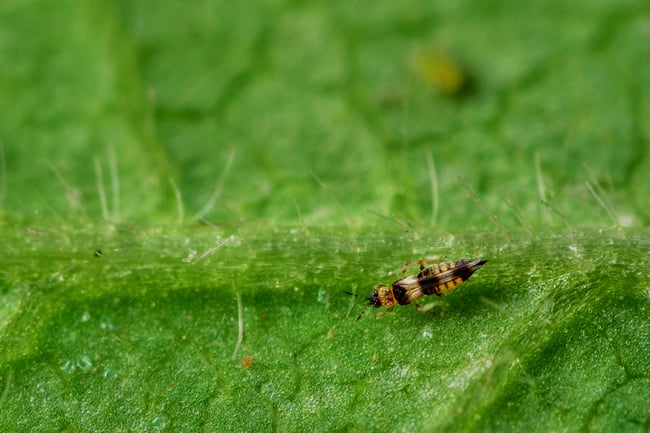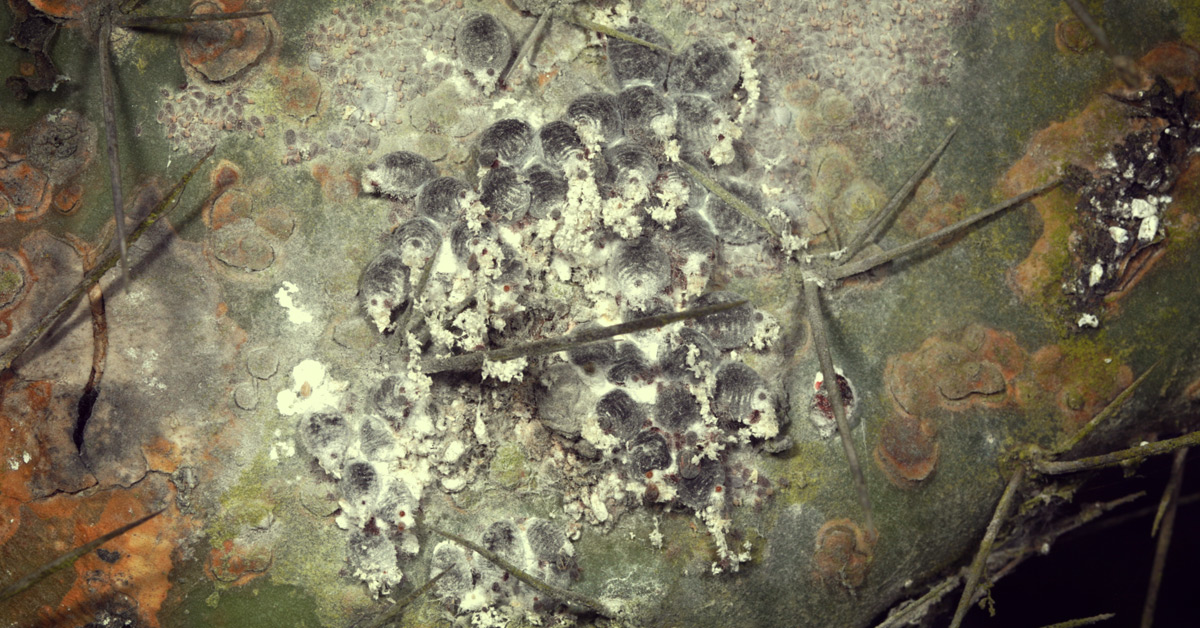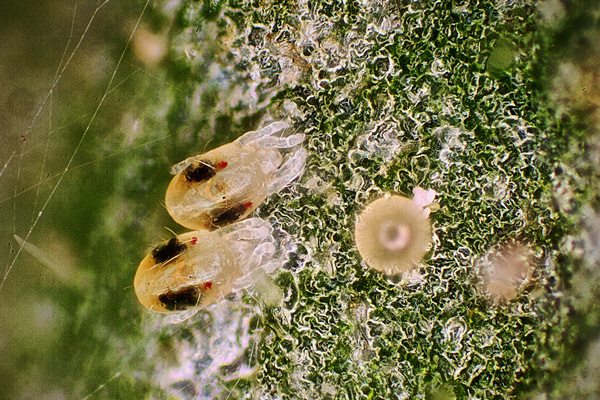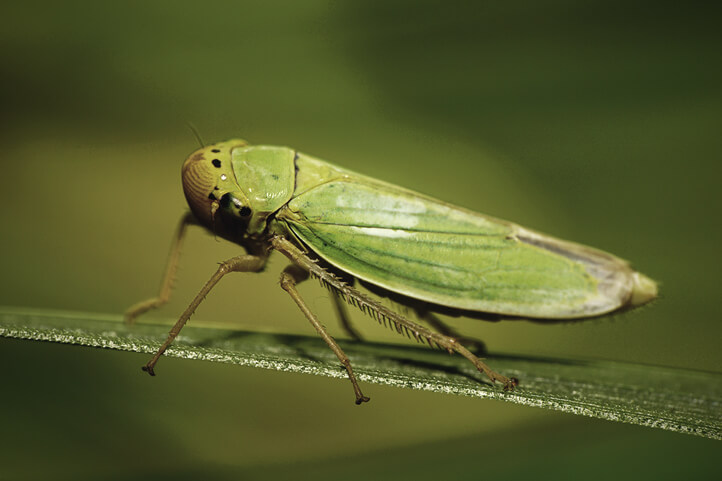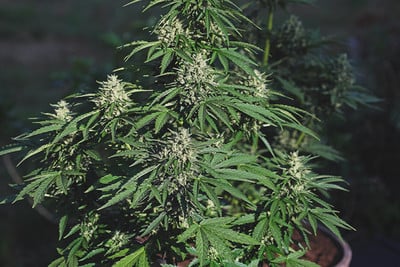.

Cannabis 101: Ladybugs as a Natural Solution to Spider Mites
Are your plants looking a little worse for wear? Spider mites could be at the root of the problem. Learn how to combat an infestation using one of the cannabis grower's most unsuspecting allies: ladybugs!
Humans have used the cannabis plant for thousands of years as a source of food, fibre, and psychoactive recreation—we still do to this day! But we're not the only species that enjoys the herb. Myriad creatures, both great and small, rely on the cannabis plant for shelter and sustenance.
Of all the cannabis-chomping critters you'll encounter in your garden, spider mites will likely be one of the most common. Although small and seemingly harmless, these minute menaces can cause some serious damage to your crop.
Yet, hope is not lost. Just as some species are menaces, others are saviours. Could ladybugs be the answer to a spider mite plight?
What Are Spider Mites?
Small, colorful, and many-legged; spider mites aren't actually insects. They are a type of arachnid closely related to spiders and ticks. They possess two traits that place them in this taxonomic category: two main body parts and eight legs. More specifically, they belong to the Tetranychidae family, which includes around 1,200 other species.
Irritating, creepy, maybe even cute to some. Spider mites might be a lot of things, but there's one thing they certainly are not: fussy eaters. These creatures like to hang out on deciduous trees, evergreens, and a variety of annual plants. They'll snack on just about all of them.
Although they appear to love the taste of cannabis tissue, they are also prolific grazers of blueberry, strawberry, and cucumber plants, as well as snap beans, peas, tomatoes, and lettuce. Spider mites will even have a go at your flower beds—marigolds and violas not excluded.
Spider mites start off as eggs, enduring the cold and harsh winter, then hatching when temperatures begin to rise. They emerge as dark-colored larvae and swiftly morph into pupae before maturing into their final form.
It doesn't take long for a new colony to prosper, especially when temperatures are warm. They congregate on the underside of leaves, including those large fan-like ones on your cannabis plants, where they string up webbing over the affected tissue—hence the name "spider" mite.
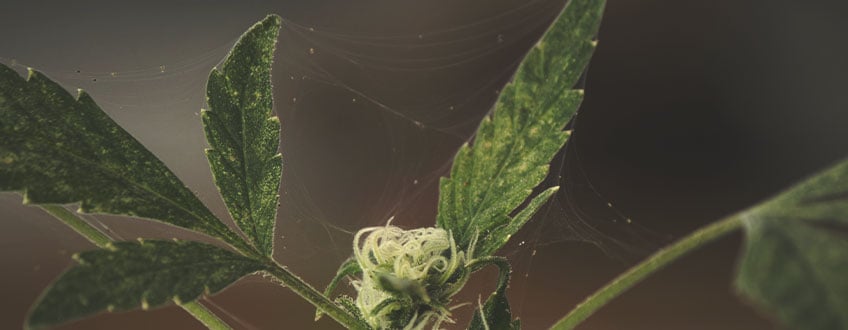
Will Spider Mites Kill My Cannabis Plants?
Yes. Spiders mites can cause real damage to cannabis plants. If an infestation sets in, expect damage to range from stunted growth all the way to fatal destruction. These small creatures possess sharp mouthparts that pierce cannabis tissue and suck out chlorophyll. After feeding on the underside of a cannabis leaf, they leave behind small spots. Eventually, leaves will become yellow, discolored, and distorted.
Cannabis plants rely on their fan leaves and their internal chlorophyll to photosynthesise and create energy. If the damage becomes severe, they may lose the ability to carry out this key function. This will slow down growth and impact yields. Eventually, if the problem remains unaddressed, plants will die.
How to Spot and Identify Spider Mites
You might struggle to spot these little guys with the naked eye, seeing as they're usually less than 0 inches in size. After whipping out a magnifying glass and taking a closer look, you'll notice their white legs and diversity in color. Some are red, whereas some are yellow and others orange.
However, you'll usually notice signs of their presence before you directly lay eyes on a specimen. Other symptoms will only appear after a large and obvious infestation has gained a foothold. The key signs that indicate a spider mite infestation include:
- Interwoven web-like threads that dominate the underside of plants
- Small white or yellow spots (feeding damage)
- Wilting and distorted leaves
- Yellowing and discoloration of plant tissue
- Stunted or slowed growth
- Dead or dying plants
Of course, physically seeing a spider mite provides the most striking evidence that you're dealing with the pest species. But can you tell them apart from other species? Look for these characteristics:
- Two main body parts
- Eight legs
- Red, yellow, or orange in appearance
- Around 0 inches in size
- Two dark spots, one on either side of the body
Now that you know what you're dealing with, let's explore several natural ways of addressing the invasive issue at hand.
Are Ladybugs Good for Dealing With Spider Mites
Fortunately, not all insects have a desire to munch on your cannabis plants. In fact, some of them are far too busy snacking on other insects to even consider it. These beneficial predatory insects are an important ally to cannabis growers, and every cultivator should welcome them into their garden.
Ladybugs are among the most effective predatory insects. These brightly colored, spotted insects might look innocent; but don't be fooled. Ladybugs are voracious killing machines. They don't employ a specialized trapping technique or stalking method; they simply walk right up to their prey and start feasting.
Ladybugs love to munch on spider mites, so much so that they know how to track them down. They are attracted to the smell of these creatures, as well as to the leaf damage typical of a spider mite infestation. After locating a herd of spider mites, ladybugs get to work. A single ladybug will consume around nine mites per hour, equalling up to 100 mites in a single day. And that's just one ladybug!
Are Ladybugs a Danger to Cannabis Plants?
No. Ladybugs won't do any damage to your cannabis plants—they are strictly carnivores. When they're not taking out spider mites, they're munching on other pests and laying their eggs in the colonies of invasive insects.
Novice gardeners have a tendency to worry when seeing any form of insect patrolling their garden. But fear not! Some of these creatures are vital allies that work to keep your plants healthy, protected, and productive.
How to Use Ladybugs to Control Spider Mites and Other Pests
Releasing some ladybugs into your garden serves as a swift and effective means of dealing with a spider mite invasion. Most garden centers and nurseries sell ladybugs that are ready to be released around your cannabis plants. Follow the tips below to make sure your population gets comfortable in their new home:
- Employ large quantities: Although a single ladybug can remove a huge amount of spider mites, you'll need to release many of them all at once to get the job done. Spider mites become established fast, and some of the ladybugs may die or fly away.
- Release during early morning or early evening: Ladybugs aren't fans of the heat. If you release them during the heat of the day, chances are they'll fly away to find shelter. Releasing them at the right time will increase the chances of them sticking around.
- Spray your plants with a light mist: Cover your plants in a coat of moisture to encourage the beneficial critters to feel comfortable and stick around.
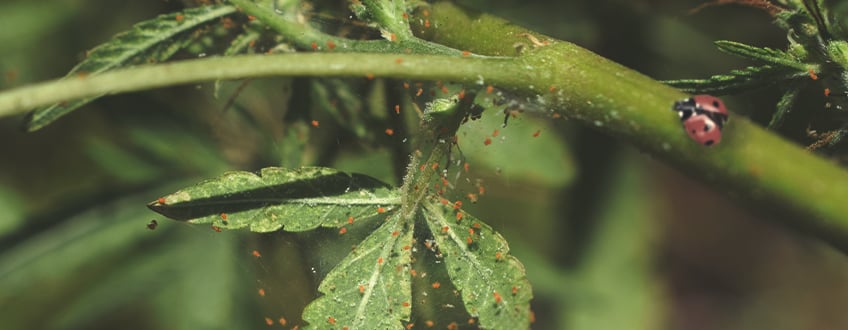
Building Your Own Ladybug Hotel
Building a ladybug hotel will provide a shelter full of nooks and crannies that ladybugs will feel safe and protected in. This structure will encourage the insects to stick around, and will also tempt wild ladybugs to enter and remain in the garden.
Essentially a messy labyrinth made from natural materials, ladybug hotels are super easy to make. They can take any shape you please, from more sophisticated house-like structures to bags stuffed with pine cones or wooden pallets loaded with straw.
Use the following materials lying around in your shed, garden, or kitchen to make your own ladybug hotel[1]:
- Straw or hay
- Lollipop sticks
- Chicken wire
- Rope
- Pine cones
- Bricks
- Plant pots
- Crates
Other Ways to Deal With a Spider Mite Infestation
Although ladybugs are effective at reducing spider mite populations, there are other preventative and curative measures that growers can employ. Explore further options below.
Neem Oil
As a natural pesticide, neem oil helps to repel various species of pests—including spider mites—without the use of dangerous synthetic chemicals. Blast the underside of affected leaves with a neem foliar spray to force spider mites out and blow off their webs.
Add one teaspoon of neem oil per litre of warm water. Add 4–5 drops of surfactant, add to a spray bottle, and apply.
Companion Plants
Companion plants have many functions in the garden, from attracting pollinators and beneficial insects to deterring pests. Several edible plants work to repel spider mites from the garden. Grow them near your cannabis plants and harvest them for eating at the end of the season.
Plants that drive away spider mites include:
- Dill
- Anise
- Carraway
- Potatoes
Predatory Insects
Ladybugs aren't the only beneficial insects with an appetite for spiders mites. The following predatory mites also work as effective assassins:
- Neoseiulus californicus
- Typhlodromus pyri
LIST OF COMMON PESTS AND PROBLEMS
- Guidelines on Building a Ladybug Hotel https://aub.edu.lb






























